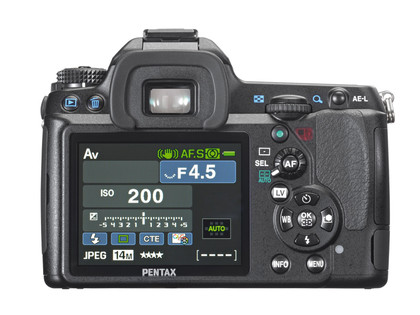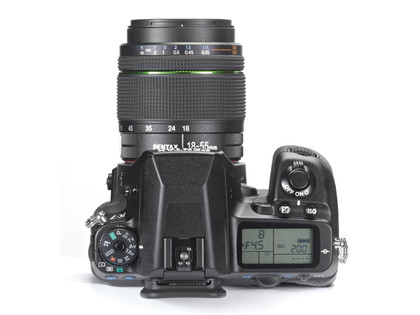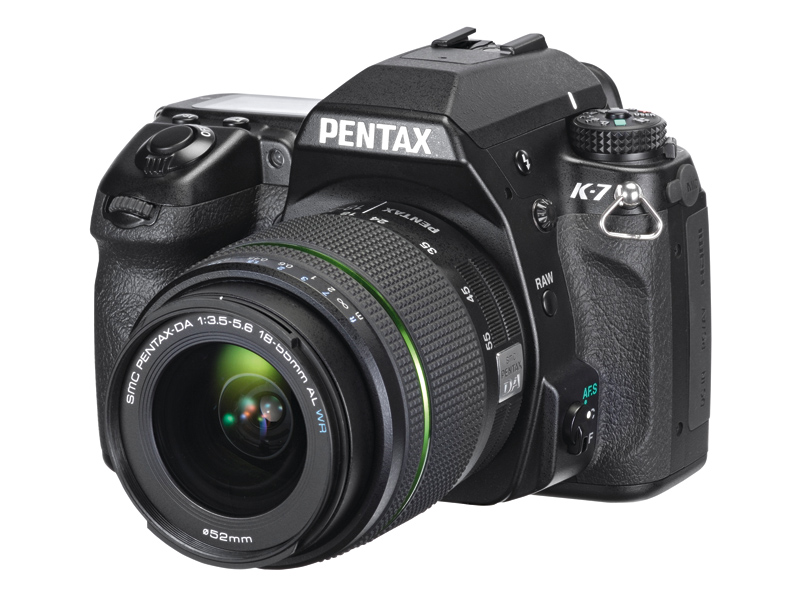TechRadar Verdict
There is much to like and enjoy on the Pentax K-7. It's a quality product with great handling, plenty of features and it delivers image files that are capable of big prints. Its price could put off the uncommitted but existing Pentax owners should form a queue
Pros
- +
Great handling
- +
Good clean images
- +
Lots of features
- +
HDR is a nice inclusion
Cons
- -
Expensive
Why you can trust TechRadar
'Just a hold a Pentax' – so the advertising slogan went over 30 years ago. To be honest, it could be used to promote the K-7, its new flagship DSLR.
The K-7 is a 14.6-megapixel camera body aimed at photographers of all levels, with a guide price of £1,230 – including the 18-55mm AL zoom lens. At this price, it's pitched near popular models such as the Canon EOS 50D, Nikon D300 and Olympus E-30, as well as newcomers including the Panasonic GH1.
Setting up

With the K-7's long features list, it's worth spending a little time with the instruction manual to set the camera up properly to suit your needs. Press the Menu button and you're into the first of 15 different pages.
The default opening page is the first of four that covers key camera options including image quality, D-range setting and selecting filters. The latter gives such options as toy camera, starburst and fisheye, and effects can be previewed by using the depth-of-field preview facility. It takes a few seconds and if you like the preview, the image can be saved which also takes a few seconds.
To tailor camera controls and engage features such as EV Steps, Noise Reduction and ISO Sensitivity Steps, you have to navigate to the 'C' menu, where there are no fewer than six pages for the 37 custom functions.
The menu system is usable but slow and not the K-7's finest hour. It's annoying that it always goes back to the default page and not the one last-used, which would seem more sensible.
Side-stepping the menu, there's plenty to enjoy, including digital filters, multiple exposure and HDR Capture. The latter has two strengths, standard and strong, and when the shutter release is pressed, the mirror flips up and three different exposures are made. About 15 seconds later you see the merged result. It's worth noting that the digital filter and HDR features only work with JPEG format.
Much better in terms of functionality are the four buttons around the OK switch that control White Balance, Flash and Drive. The fourth control is the Custom Image function, which enables you to pick one of seven modes that fine-tune colour reproduction to your taste.
Among the options are Vibrant, Muted, Landscape and Monochrome settings. In each Colour mode you can further adjust the parameters of Saturation, Hue, High/Low Key, Contrast and Sharpness. In Monochrome, toning and filter effects can be applied.
In the field

Once set up, using the K-7 can begin in earnest and it's here that the camera shows its class. The compact body fits the hands well, the shutter and drive mechanism are quiet and discreet, while the autofocus is responsive, although it emits a slight whine. Pentax does have ultrasonic focusing technology, but it hasn't found its way onto its cheaper lenses yet.
Look through the viewfinder and you're rewarded with an image that shows 100 per cent of what will be recorded by the sensor; you get 100 per cent coverage in Live View too. Speaking of Live View, this works with Contrast Autofocusing and also has a Face Detection AF mode. We found focusing in Live View was twitchy in anything other than perfect conditions, so it pays to check that the image is sharp before moving on.
The K-7's 77-segment exposure meter does a good job in demanding conditions and it was only in extreme contrast that it needed help by using Compensation or the Autoexposure Lock.
Complementing the quiet shutter is the motordrive that zips along at just over 5fps in its Continuous High mode. In the best JPEG mode, we got 23 images at this rate using a SanDisk Extreme III SD card before the camera slowed to about one shot per second. In RAW only (DNG setting) we got 14 frames at top speed before the camera slowed to one shot every two seconds.
Shooting RAW and JPEG, the camera gave ten shots at top shooting speed. We shot RAW and JPEG simultaneously for most of our test shots. Pentax has its own RAW format but the processing software wasn't available at the time of testing, so we used the DNG format that can be processed in Adobe Photoshop.
Image quality is great. Comparing the JPEG with the converted RAW of the same image the JPEG is noticeably noisier. The difference between JPEG and RAW files is more marked as you ascend the ISO scale, until you hit ISO 6400, where the JPEG looks smoother than the RAW.
At more usual ISO settings, such as ISO 100 and 200, images are very clean and colour reproduction is accurate and nicely saturated. All in all, The K-7 showed itself to be a highly capable DSLR performer.
Follow TechRadar reviews on Twitter: http://twitter.com/techradarreview
